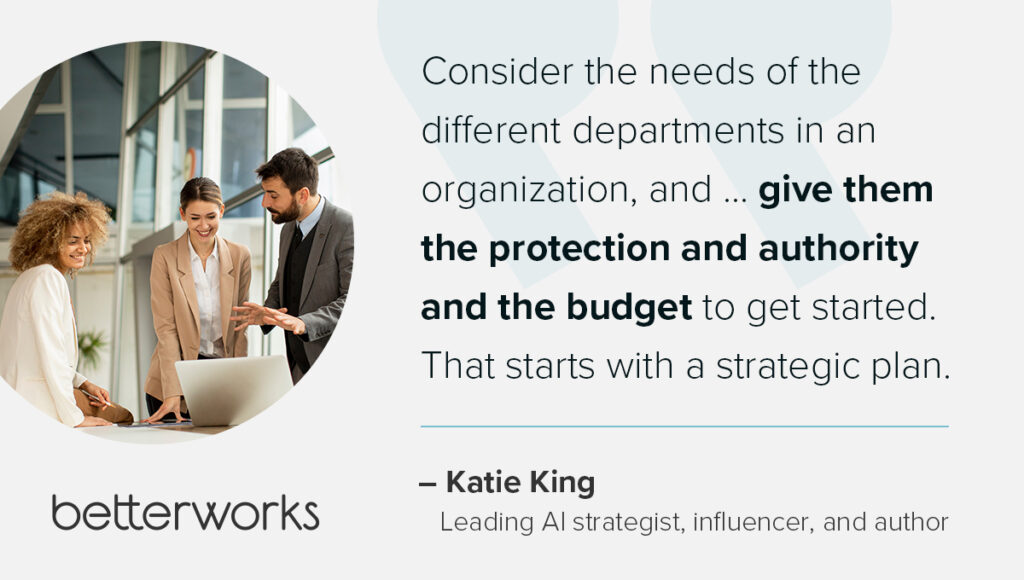AI is increasingly becoming embedded in the tools we use for work every day — and that means HR leaders will play a key role in how organizations evolve their approach to AI to be more thoughtful and intentional.
Few people have more experience implementing AI safely and strategically than Katie King, who will be a keynote speaker at EmpowerHR Europe. As a consultant on AI and business transformation, author of two well-respected books on AI, and member of the U.K. task force for the adoption of AI, Katie has plenty of hands-on experience designing AI strategies for businesses. She knows that, often, the greatest challenge is simply getting started.
That’s where HR can really deliver value, Katie says. “HR is really central, and I see AI really being able to take HR … into a much more strategic space,” she says. Ahead of her keynote at EmpowerHR Europe, we asked Katie to share her advice on how HR leaders can proactively drive strategic adoption of AI across their organizations.
Start with the business case
Rather than worrying about AI in general, which can quickly become overwhelming, Katie recommends pinpointing existing business challenges you’re trying to overcome and exploring how AI can help you address them. “What are three problems or opportunities we have in HR at the moment where AI or machine learning can play an important role?” Katie says. For example, you might apply predictive analytics to track industry changes and suggest future-focused skills your workforce needs to remain competitive.
From there, try different tools to see what best solves the problem. Traditional business planning cycles may not support quick learning, so don’t be afraid to adopt a shorter, iterative cycle for AI experimentation. “How do we make this part of our six-month plan, not just the one-year, three-year, five-year plan?” Katie says. “You need to constantly be trying these new tools and doing these proofs of concept. It doesn’t have to be a big one-year plan.”
Assemble a cross-functional AI leadership team
HR leaders are in a natural place to connect people across the organization, which is essential when creating an AI strategy. You need to “consider the needs of the different departments in an organization, and to give them the protection and authority and the budget to get started. … That starts with a strategic plan,” Katie says.
Your AI team should represent a variety of departments and company interests. “You are sharing best practices, you are really working out what success looks like. … You need a consortium, a group of people who are the go-to AI leaders for their department,” Katie says.
IT and legal are obvious candidates for your AI team, but make sure to include marketing, Katie says. One of the greatest challenges to implementing an AI strategy at work is aligning the organization on a shared vision, she notes, and a strong alliance with your marketing team can make a big difference in messaging and communication.

Steadily build toward a strategy
Developing a comprehensive strategic plan for AI in HR takes time, and with the rapid growth of AI tools right now, you won’t have the luxury of coming up with that plan before you get started. You’ll need to develop your strategy concurrently as you’re testing new tools in your workflows.
As you experiment with those new tools and processes, keep your big-picture goals top of mind. But don’t be too hard on yourself if early attempts fall short. “Work out what your KPIs are and be very open-minded — not necessarily to fail — but to do iterations,” Katie says.
You can’t embed AI in strategic operations overnight, Katie says: “Be very aware that you are on this journey of continuous learning.”
Want to learn more? Register for EmpowerHR Europe to hear more from Katie about developing your organization’s AI strategy.
Hear Katie at EmpowerHR Europe









